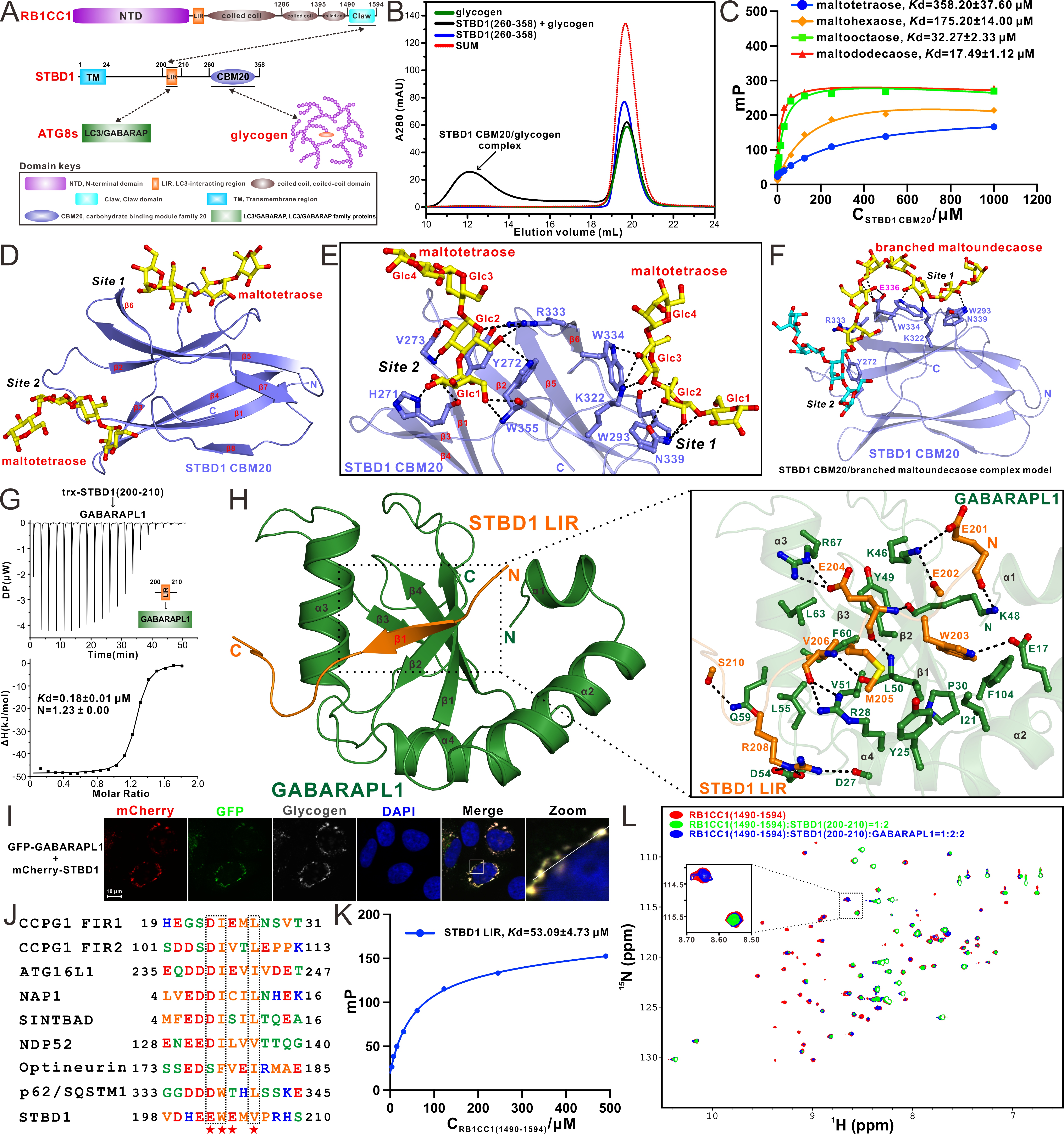Glycogen, the main form of glucose storage in mammals, is one of the most important energy donors in cells. In mammalian cells, the catabolism of glycogen mainly includes two different pathways: (1) the cytosolic glycolysis process; (2) the lysosome-dependent glycogen autophagy process (glycophagy). The catabolism of glycogen is crucial for maintaining blood glucose balance and cellular energy supply, and its abnormalities are closely related to many human diseases, such as Pompe’s disease. Pompe's disease is a glycogen accumulation disease that causes glycogen accumulates abnormally in the lysosome due to defective lysosomal acid glucosidase, and its occurrence further emphasizes the importance of the glycophagy process. STBD1 is currently the only known autophagy receptor involved in glycophagy in mammalian cells. However, the detailed molecular mechanism of how STBD1 selectively recognizes glycogen and mediate glycophagy is still largely unknown. Recently, a research paper titled “Decoding the molecular mechanism of selective autophagy of glycogen mediated by autophagy receptor STBD1” was published on the PNAS journal by Professor PAN Lifeng’s group from Shanghai Institute of Organic Chemistry, CAS. In this paper, they systematically characterized the interactions of STBD1 with glycogen and related carbohydrate, and discovered that STBD1 CBM20 can interact with glycogen and other related sugar molecules. Using X-ray crystallography, they further determined, for the first time, the crystal structure of STBD1 CBM20 in complex with maltotetraose, and uncovered an unprecedented binding mode involving two carbohydrate-binding sites adopted by STBD1 CBM20. In addition to the canonic carbohydrate-binding site, the CBM domain of STBD1 also contains a novel carbohydrate-binding site. Further structural modeling and mutagenesis experiments confirmed that the CBM domain of STBD1 can simultaneously bind two distinct linear glucan chains of a branched glucan linked by the α-1,6-glucossidic bond through the unique two-site binding mode, thereby selectively recognizing glycogen. Meanwhile, they also characterized the interactions of STBD1 with six human ATG8 family proteins, and found that STBD1 can selectively recognize six ATG8 family proteins through its LIR motif. They further resolved the crystal structure of STBD1 LIR in complex with GABARAPL1, and elucidated the molecular mechanism by which STBD1 selectively recognizes ATG8 family proteins. Moreover, they demonstrated that STBD1 can bind glycogen and GABARAPL1 in cells. Finally, based on the sequence alignment and MS analysis, they found that the LIR motif of STBD1 can serve as an FIR motif to directly interact with the Claw domain of RB1CC1, a subunit of autophagy initiation ULK complex. Further biochemical assays and structural modeling revealed the binding mechanism between STBD1 LIR and RB1CC1 Claw, thereby elucidating the molecular mechanism of the recruitment of RB1CC1 by STBD1. In addition, using NMR titration assay, they also confirmed that RB1CC1 and GABARAPL1 are competitive in binding with STBD1 LIR. In summary, this study has systematically characterized the interaction network of STBD1 with glycogen, RB1CC1 and GABARAPL1, and uncovered the molecular mechanism underlying the interactions of STBD1 with glycogen, GABARAPL1 and RB1CC1 from structural perspective, thereby laying a good foundation for further understanding the mechanism of STBD1-mediated glycophagy process. This work was supported by grants from the National Natural Science Foundation of China (32071219, 32071297, 92253301, 21822705), the CAS Youth Interdisciplinary Team (JCTD-2022-10), the National Key R&D Program of China (2022YFA1304700), the National Basic Research Program of China (2022YFC2303102).

Figure 1. Mechanistic insights into the interactions of STBD1 with glycogen, ATG8 family proteins and RB1CC1(Image by PAN Lifeng) Pan Lifeng Ph.D.Professor Shanghai Institute of Organic Chemistry, Chinese Academy of Sciences Ling Ling Road 345 Shanghai 200032 China Tel: 0086-21-54925561 Email: panlf@sioc.ac.cn |


